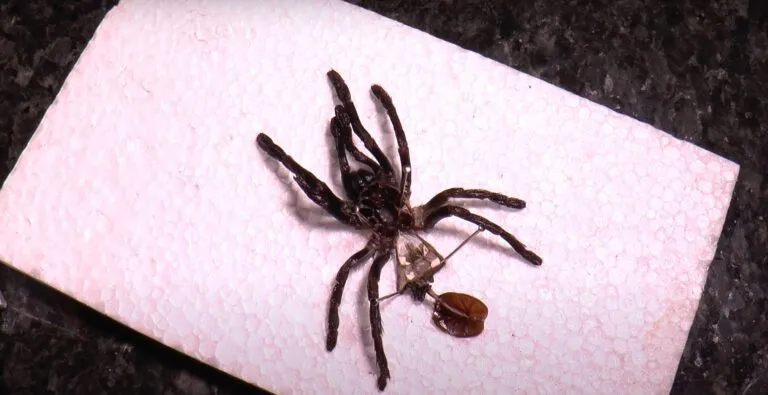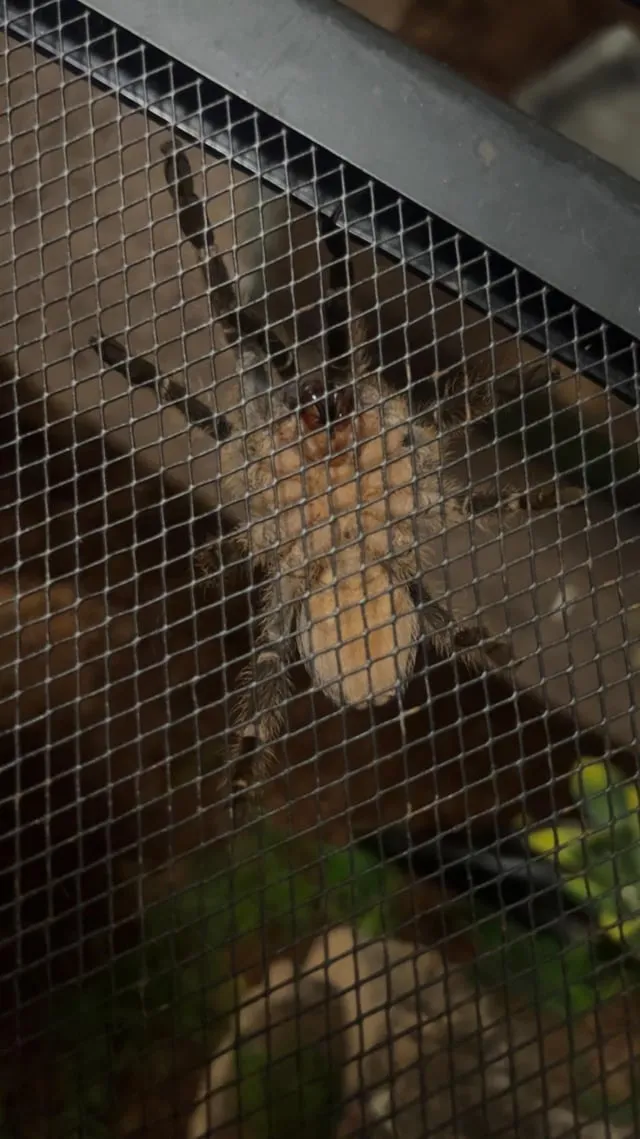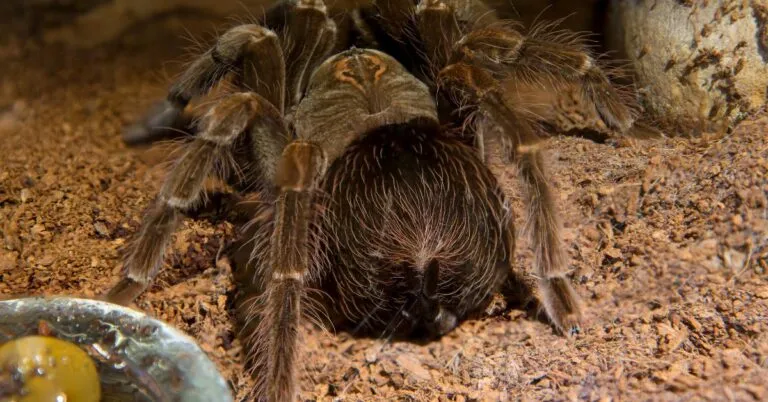What are the Key Differences Between Male and Female Tarantulas
Tarantulas, with their impressive size and captivating behaviors, have become popular pets for many. However, before bringing one home, understanding the differences between male and female tarantulas is essential. Identifying the sex of your tarantula is crucial for its care, including knowing its lifespan, predicting its behavior, and understanding its reproductive potential. This guide will explore the seven key differences, helping you become a well-informed tarantula owner. By understanding these distinctions, you can provide the best possible care and appreciate the unique characteristics of your arachnid companion. This knowledge is key to successful tarantula ownership and responsible pet care. The information provided here will help you confidently identify the sex of your tarantula and understand its specific needs, which contributes to a healthier and more fulfilling experience for both you and your eight-legged friend. Let’s delve into the fascinating world of tarantulas!
Size and Appearance
One of the most noticeable differences between male and female tarantulas is their size and overall appearance. Females typically grow larger and have a more robust build compared to their male counterparts. This size difference is not only an aesthetic one; it is linked to their biological roles and life cycles. Females invest more energy into growth and reproduction, leading to their larger size. Males, on the other hand, often prioritize early maturation, meaning they may reach adulthood sooner but remain smaller in comparison. Understanding these physical distinctions can provide valuable insights into the overall health and maturity of your tarantula, facilitating informed decisions regarding its care and needs. By carefully observing these physical differences, you can develop a deeper understanding of the life cycle and unique characteristics of each individual tarantula.
Body Size

Female tarantulas generally exhibit a larger body size compared to males, particularly as they mature. The abdomen of a female tarantula is typically more substantial, appearing rounder and more filled. This is due to their ability to carry eggs and store nutrients for reproduction. The male tarantulas, tend to have smaller bodies in comparison. Their primary focus is to reach maturity as quickly as possible, and they typically allocate less energy into significant body growth. These variances in size are frequently the first visual indicators that experienced keepers use to sex their tarantulas. Observing these size differences can provide an early indication of the sex of the tarantula, although these are not definitive. Remember to use additional characteristics to determine the sex of your tarantula.
Leg Span
Although overall body size is a primary indicator, leg span can vary between sexes. Female tarantulas, with their larger bodies, can sometimes have a slightly greater leg span, providing a more impressive appearance. In some species, this is a clearer distinction than others. As with body size, leg span is a useful clue but is not conclusive on its own. The leg span difference isn’t always as apparent as body size differences, particularly when considering the tarantula’s age and species. This is due to genetic variance, differences in growth rates, and other factors. It is best to consider other characteristics to determine the sex of your tarantula. Always keep in mind that a definitive sex determination requires more in-depth examination, like an examination of the molt, for example.
Coloration
Coloration is sometimes, but not always, a differentiating factor. Some tarantula species exhibit subtle differences in color or pattern between males and females. These differences aren’t always noticeable, and color variations depend greatly on species and individual genetics. Some males may display brighter colors or different patterns as they mature, while females might retain more subdued hues. These color variations can be used in conjunction with other factors to help determine the sex of the tarantula. In some species, these distinctions become more pronounced with age or during the mating season. Ultimately, color alone is not a reliable indicator of sex. Combining this with information from molting or examining the pedipalps will provide a better idea of the sex of your tarantula.
Molting and Exuviae

Molting, the process of shedding their exoskeleton to grow, offers the most reliable method for sexing tarantulas. The exuviae, or shed exoskeleton, provides the necessary clues to determine the sex. Carefully examining the exuviae after a molt is often the most accurate method. The presence or absence of specific structures on the underside of the tarantula’s abdomen provides confirmation. Examining the molt gives an almost certain answer regarding the sex of the tarantula. This method is more reliable than assessing the overall size or other visual characteristics of the tarantula. Always treat the exuviae with care to avoid damage when trying to identify sex through examination.
Identifying the Spermathecae
Female tarantulas possess spermathecae, which are visible on their exuviae. These structures, located inside the abdomen, are used to store sperm after mating. These are small, sac-like structures that will vary in shape depending on the species. They appear as a distinct structure or set of structures on the underside of the molt. Their presence is the definitive sign of a female. This is the most direct method to determine the sex using molts. The size and shape of the spermathecae vary among different tarantula species. Careful examination under magnification can help identify the presence of spermathecae. Always handle the exuviae gently to prevent damage to the delicate structures for an accurate sex determination.
Checking for Bulbs on Pedipalps
Male tarantulas develop specialized structures called pedipalps, which are modified appendages near their mouths. These pedipalps are used during mating to transfer sperm to the female. On their final molt, males develop bulbs at the end of their pedipalps. These bulbs contain the sperm. The presence of these bulbs is a clear sign of a male. The shape and size of the bulbs can vary between different species. The pedipalps are best seen under magnification, as the bulbs can be small and difficult to see with the naked eye. The presence of these bulbs is an unambiguous indication of a male tarantula. Identifying these structures is a key step in sexing male tarantulas. If you do see them, the sex of the tarantula is confirmed to be male.
Lifespan

Lifespan is another significant difference between male and female tarantulas. Females generally live much longer than males. This extended lifespan influences their care and management. The longer lifespan of the females is a significant factor when selecting a tarantula as a pet. The decision of whether to select a male or female tarantula depends on your preferences and expectations. Females typically live for many years, providing a long-term commitment for tarantula keepers. Males have much shorter lifespans, often only a few years after reaching maturity, which makes females ideal for those seeking a long-term pet.
Male Lifespan
Male tarantulas have a shorter lifespan compared to females, often only living for a few years after reaching maturity. Their primary goal is to reproduce, and they often die shortly after mating. Once they reach maturity, they allocate most of their energy to reproduction, which diminishes their overall longevity. Once a male successfully matures, he will molt for the final time. After the final molt, his lifespan can be as short as a few months, due to the stress and energy depletion during mating. The shorter lifespan is a crucial factor to consider when choosing a tarantula. It also influences the overall care that is provided, because their needs change throughout their lives.
Female Lifespan
Female tarantulas exhibit significantly longer lifespans. Many species can live for over 20 years. In some cases, females have been known to live even longer, depending on the species and care provided. This extended lifespan is due to their role in reproduction and their ability to store resources. This is the primary reason to select a female if you want a long-term pet. These tarantulas are usually the center of attention, which is the main focus for owners who plan on keeping a tarantula for several years. Proper care and diet are critical for ensuring that a female tarantula lives a long, healthy life. This long lifespan requires commitment and informed care practices to ensure optimal health. It can also be an advantage if you are planning to breed your tarantula.
Behavioral Differences

Behavioral differences between male and female tarantulas can provide insights. Males often become more active as they approach maturity, especially after their final molt. They start wandering, searching for a mate. Females, particularly those that are mature, are often more sedentary, spending their time in burrows. Their behavior is dictated by their reproductive roles. Understanding these behavioral variations is essential for providing appropriate care. Knowing the specific behaviors allows keepers to create an environment that meets the unique needs of their tarantulas. It is crucial to observe their behavior to identify potential problems or changes in their health.
Maturity and Mating
Maturity and mating behaviors differ. The sexual maturity, as well as how they approach mating differs significantly between male and female tarantulas. This is a critical period for both sexes, and observing their behavior during this phase is fascinating. It also demands an understanding of their requirements. Knowing these behaviors can help you manage your tarantula. A good understanding of the mating cycle is key to helping your tarantula breed successfully. In short, understanding the differences helps you manage your tarantulas and contribute to their overall wellbeing.
Male Maturity
Male tarantulas reach maturity faster than females. They molt several times before reaching sexual maturity. The final molt is crucial for males, as it’s when they develop the specialized pedipalps and become capable of reproduction. After this final molt, they are in their prime for mating. The onset of male maturity triggers changes in behavior and appearance, and the male will also develop those bulbs on the pedipalps. This usually happens within a few years. Once they reach maturity, their primary focus is on finding a mate. This phase is often short-lived because of the stress and effort involved in mating.
Female Maturity

Female tarantulas reach sexual maturity later than males. This process requires a longer period. They continue to grow and molt for many years before they are ready to reproduce. The onset of sexual maturity in females is indicated by their readiness to mate, which is determined by the spermathecae inside their body. These tarantulas are generally more sedentary, which means they focus on building a safe burrow or dwelling. They also begin exhibiting behaviors that indicate their readiness to mate. Because of their extended lifespan, females are more likely to have the opportunity to mate multiple times. The maturity process for females is a slow but steady process.
Mating Process
The mating process involves distinct behaviors from both males and females. Male tarantulas will create a sperm web. They then deposit sperm into the web and take it up into their pedipalps. Males initiate the mating dance with courtship rituals, which are species-specific. If the female is receptive, she will allow the male to approach. The male then deposits the sperm into the female’s spermathecae. Following mating, the female may eat the male. The cycle then begins again. The successful mating process is a complex series of events that depends on the health and readiness of both tarantulas. Keeping the tarantulas under the appropriate environment can help with successful mating.
Conclusion
Understanding the key differences between male and female tarantulas is fundamental for providing proper care and ensuring your tarantula’s well-being. From size and appearance to lifespan and behavior, recognizing these distinctions enables you to create an optimal environment and make informed decisions regarding your pet. The information above will help you care for your tarantula. Whether you are a beginner or an experienced tarantula keeper, the knowledge gained from this guide enhances your ability to understand, appreciate, and care for these amazing creatures. Embrace the opportunity to learn and connect with your tarantula, ensuring a fulfilling and rewarding experience for both you and your fascinating arachnid companion. Happy tarantula keeping!
